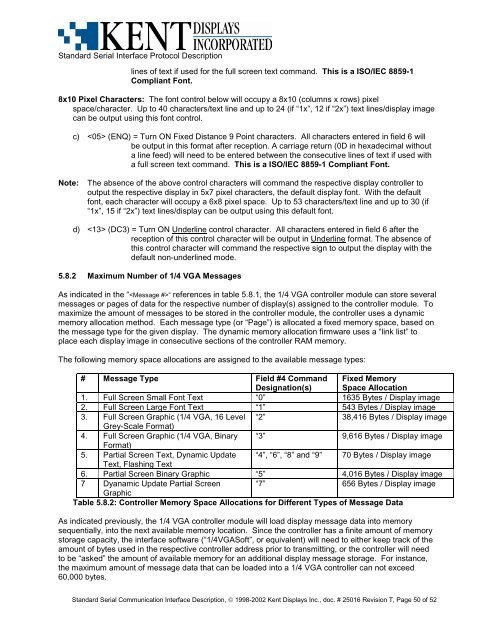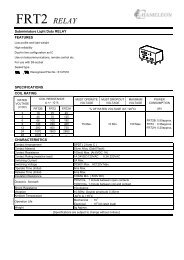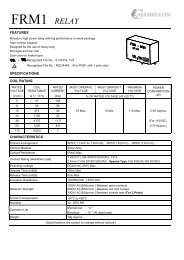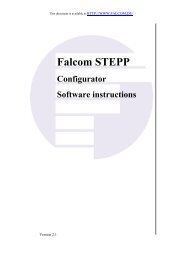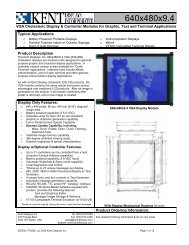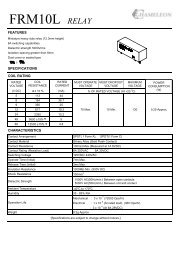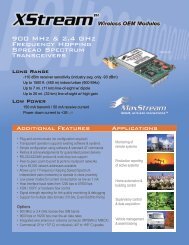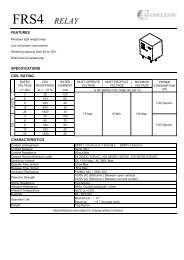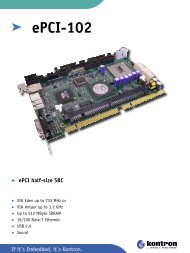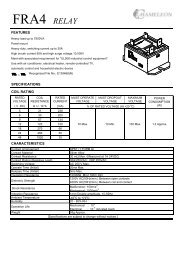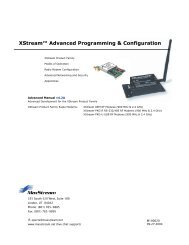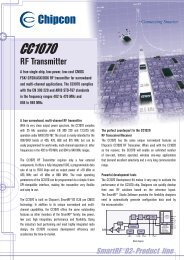STANDARD SERIAL COMMUNICATION INTERFACE and ...
STANDARD SERIAL COMMUNICATION INTERFACE and ...
STANDARD SERIAL COMMUNICATION INTERFACE and ...
Create successful ePaper yourself
Turn your PDF publications into a flip-book with our unique Google optimized e-Paper software.
St<strong>and</strong>ard Serial Interface Protocol Description<br />
lines of text if used for the full screen text comm<strong>and</strong>. This is a ISO/IEC 8859-1<br />
Compliant Font.<br />
8x10 Pixel Characters: The font control below will occupy a 8x10 (columns x rows) pixel<br />
space/character. Up to 40 characters/text line <strong>and</strong> up to 24 (if “1x”, 12 if “2x”) text lines/display image<br />
can be output using this font control.<br />
c) (ENQ) = Turn ON Fixed Distance 9 Point characters. All characters entered in field 6 will<br />
be output in this format after reception. A carriage return (0D in hexadecimal without<br />
a line feed) will need to be entered between the consecutive lines of text if used with<br />
a full screen text comm<strong>and</strong>. This is a ISO/IEC 8859-1 Compliant Font.<br />
Note:<br />
The absence of the above control characters will comm<strong>and</strong> the respective display controller to<br />
output the respective display in 5x7 pixel characters, the default display font. With the default<br />
font, each character will occupy a 6x8 pixel space. Up to 53 characters/text line <strong>and</strong> up to 30 (if<br />
“1x”, 15 if “2x”) text lines/display can be output using this default font.<br />
d) (DC3) = Turn ON Underline control character. All characters entered in field 6 after the<br />
reception of this control character will be output in Underline format. The absence of<br />
this control character will comm<strong>and</strong> the respective sign to output the display with the<br />
default non-underlined mode.<br />
5.8.2 Maximum Number of 1/4 VGA Messages<br />
As indicated in the “” references in table 5.8.1, the 1/4 VGA controller module can store several<br />
messages or pages of data for the respective number of display(s) assigned to the controller module. To<br />
maximize the amount of messages to be stored in the controller module, the controller uses a dynamic<br />
memory allocation method. Each message type (or “Page”) is allocated a fixed memory space, based on<br />
the message type for the given display. The dynamic memory allocation firmware uses a “link list” to<br />
place each display image in consecutive sections of the controller RAM memory.<br />
The following memory space allocations are assigned to the available message types:<br />
# Message Type Field #4 Comm<strong>and</strong><br />
Designation(s)<br />
Fixed Memory<br />
Space Allocation<br />
1. Full Screen Small Font Text “0” 1635 Bytes / Display image<br />
2. Full Screen Large Font Text “1” 543 Bytes / Display image<br />
3. Full Screen Graphic (1/4 VGA, 16 Level “2” 38,416 Bytes / Display image<br />
Grey-Scale Format)<br />
4. Full Screen Graphic (1/4 VGA, Binary “3” 9,616 Bytes / Display image<br />
Format)<br />
5. Partial Screen Text, Dynamic Update “4”, “6”, “8” <strong>and</strong> “9” 70 Bytes / Display image<br />
Text, Flashing Text<br />
6. Partial Screen Binary Graphic “5” 4,016 Bytes / Display image<br />
7 Dyanamic Update Partial Screen “7” 656 Bytes / Display image<br />
Graphic<br />
Table 5.8.2: Controller Memory Space Allocations for Different Types of Message Data<br />
As indicated previously, the 1/4 VGA controller module will load display message data into memory<br />
sequentially, into the next available memory location. Since the controller has a finite amount of memory<br />
storage capacity, the interface software (“1/4VGASoft”, or equivalent) will need to either keep track of the<br />
amount of bytes used in the respective controller address prior to transmitting, or the controller will need<br />
to be “asked” the amount of available memory for an additional display message storage. For instance,<br />
the maximum amount of message data that can be loaded into a 1/4 VGA controller can not exceed<br />
60,000 bytes.<br />
St<strong>and</strong>ard Serial Communication Interface Description, © 1998-2002 Kent Displays Inc., doc. # 25016 Revision T, Page 50 of 52


